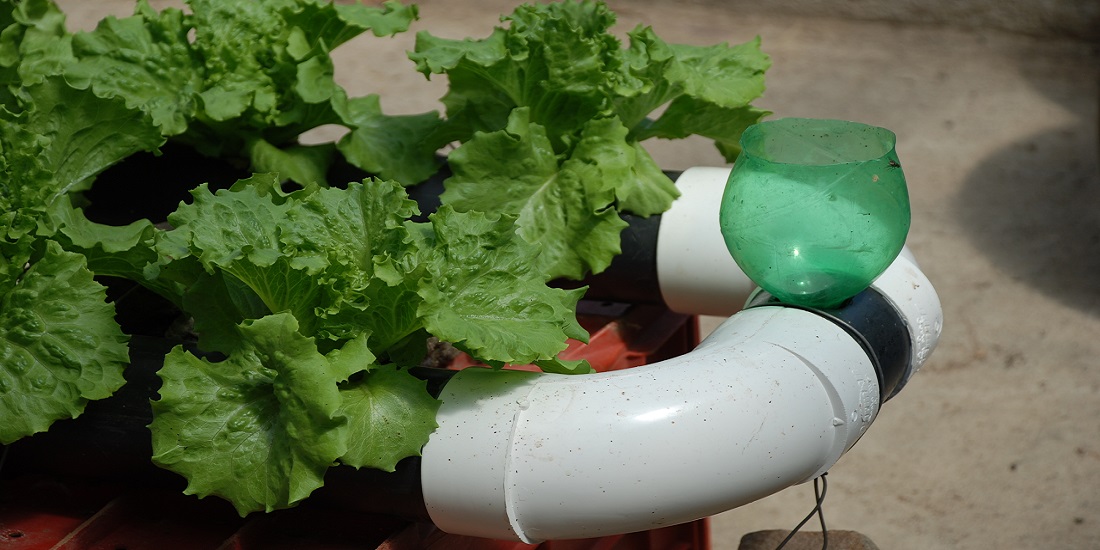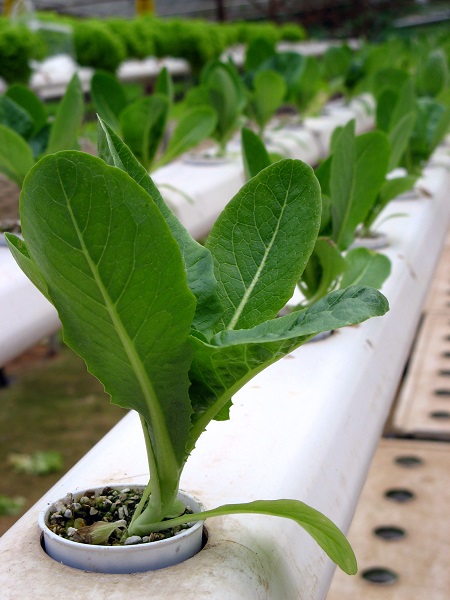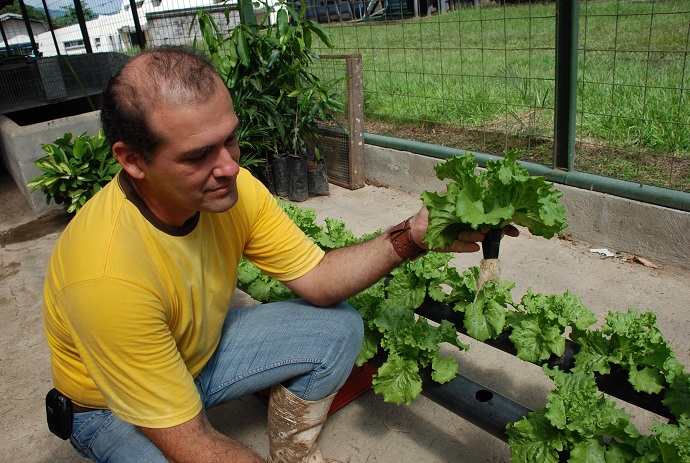What is Hydroponics and How Does it Work?

Hydroponics is a part of hydroculture, and is an effective technique used to grow plants using nutrient solution in water, without the need to use soil. Some materials like perlite, gravel, pea stone and many other are used as growing medium instead of dirt, which provide good support for the root system and the plant. The nutrients are added in and transported by the water to the roots of the plant. In soil plants need to grow roots to find nutrients, while in a hydroponic system the roots don’t need to search for food. Nutrients are right there when your vegetables need it and how much they need. This system allows growing plants in small or big containers without even having an actual soil garden.
Usually, with all hydroponic systems there is a tank in which water and the nutrients are kept, the garden bed is mounted on top of that, and except for the static systems where there is no electricity or devices involved, water is circulated to the plants providing them with nutrients.

Types of hydroponic systems:
There are many types of hydroponic systems with many variations. Below is a list of the most popular basic hydroponic systems and a brief description for each of them.
1) Wicks systems are a type of systems in which the plants are provided with a certain amount of nutrient solution in a bucket, tub or tank. This solution kept at a specific level, refilled or changed regularly. The wick allows the nutrient solution to be drawn to the growing medium without pumps, keeping the roots aerated at same time.
2) Flood and drain system works by flooding and then draining the growing tray with a water pump. The system is provided with an overflow tube which allows to keep the water below a certain level.
3) Nutrient film technique is a basic hydroponic system in which there is continuous circulation of nutrient solution to the plants. The water flows back into the nutrient solution tank, and there is no growing medium used.
4) Water cultures require the plant roots to be immersed in the water which contains the nutrient solution. The roots are totally under water and air pumps are used to keep them oxygenated.
5) Drip systems are easy to operate and the water flow is controlled by a pump. The nutrient is placed in a reservoir and dripped at the roots of each plant. The variations of this method is one that allows to reuse the excess nutrient, and another one which doesn’t. The recovery system is more efficient because of the possibility to reuse the nutrient solution and it doesn’t require precise watering cycles.
The pH control in hydroponic systems:
In hydroponics it is important to control the pH of the of the hydroponic garden. When pH is at the good level for each plant, they absorb nutrients and grow optimally.
Checking the pH of the nutrient solution is done by using paper strips which are not that accurate, or liquid test kits, or even better, pH meters. Each plant has its own pH needs and you can easily control it by adding a pH adjuster solution into the nutrient water to bring it to the desired level. You can find pH adjuster solution at any hydroponic supply store. The most popular solution to lower pH is phosphoric acid and to raise pH is potassium hydroxide. As the plant uses the nutrient, the solution’s pH goes up. The pH will need to be checked periodically and adjusted when necessary.
Nutrients in hydroponics:
Hydroponic fertilizers are added to the water in the system to help the vegetables grow. There are 2 types of fertilizers: Liquid and powder.
Liquid fertilizers are best to use for beginner gardeners and small systems. They consist of a mix of concentrated nitrogen, phosphorus and potassium in different ratios. Powdered fertilizers are used for larges hydroponic systems and are more complicated to use than liquid ones. You can choose the nutrient combination that is the most convenient for your hydroponic garden.
Benefits of hydroponics:
There are many benefits of hydroponic gardening.
1) Most of all there is no need for a backyard or land to grow your vegetables. The great advantage is that you can easily create a garden in any room inside your apartment or house. It doesn’t have to be a huge garden, you can experiment and see what works best for you. A space saving idea is to grow vertically.
2) The water usage is diminished and some systems allow reuse of water that circulates in a closed system.
3) Vegetables can be planted all year round. All they need is light, good temperature for growth and plenty of nutrients.
4) You actually use less fertilizer than you would use when growing in a regular soil garden. The water transports all the nutrients to the plant’s roots, and there is no loss through the soil.
5) Thus, you have full nutrient control and you can feed your vegetables all they need to grow healthy and have a rich harvest.
6) Plants grow 30-50% faster than in soil because they are provided with plenty of nutrients. There are visible differences between plants that grow in pots or garden and the ones that grow in a hydroponic garden.
7) Having all the rich food at the tips of their roots, the vegetables will be more productive and better tasting.
8) There will be less need to use pesticides because the microorganisms from the soil and the soil itself are missing.
9) Growing your own vegetables at home is more environmentally friendly, and hydroponics brings an added benefit to it. There is no shipping and fuel necessary to transport vegetables, no packaging required, no chemical waste from pesticide and other substances used in agriculture.
10) You can provide your family with fresh and healthy vegetables without being dependent on the grocery store.
Tips on a hydroponics garden set up:
When you decide to grow hydroponically there are some tips to be considered:

1) You can start you own hydroponic garden by making it yourself, or by buying a starter kit and follow the instructions. Choose the best system that fits your needs and learn as much as you can about the system you picked.
2) When a beginner, the best plants to grow are tomatoes, cucumbers, herbs, lettuce, kale, watercress and strawberries.
3) When adding the plants to the new garden make sure to gently rinse them with water and remove as much dirt as you can.
4) Make sure the plants have plenty of light and proper temperature to grow.
5) Regularly check the nutrient solution level and its pH and adjust if necessary.
6) Check for leaks regularly, and seal when needed.
7) Plants need support when they grow tall, and you can consider building a support for them.
8) Water your plants as often as to keep the roots wet and never let them dry out at same time allow the roots to be oxygenated.
9) Make sure that you cover any exposed electrical devices, like air pumps or other devices you may use, so that the rain or water won’t reach them.
10) After each harvest clean and disinfect the system with hydrogen peroxide to kill any undesired microorganisms.

Happy hydroponic gardening!
Sources:
http://www.homehydrosystems.com/
http://www.ncbi.nlm.nih.gov/pmc/articles/PMC4483736/
https://en.wikipedia.org/wiki/Hydroponics
http://www.simplyhydro.com/
http://maximumyield.com/blog/2015/01/01/i-have-a-flood-and-drain-hydroponic-system/